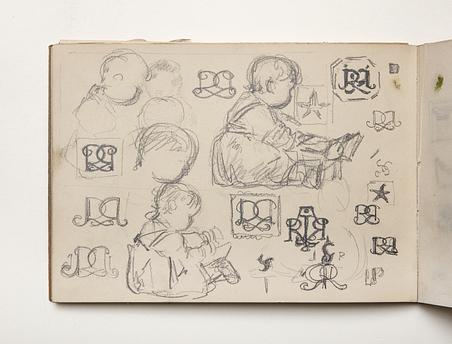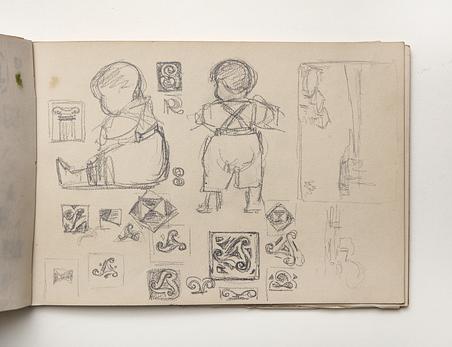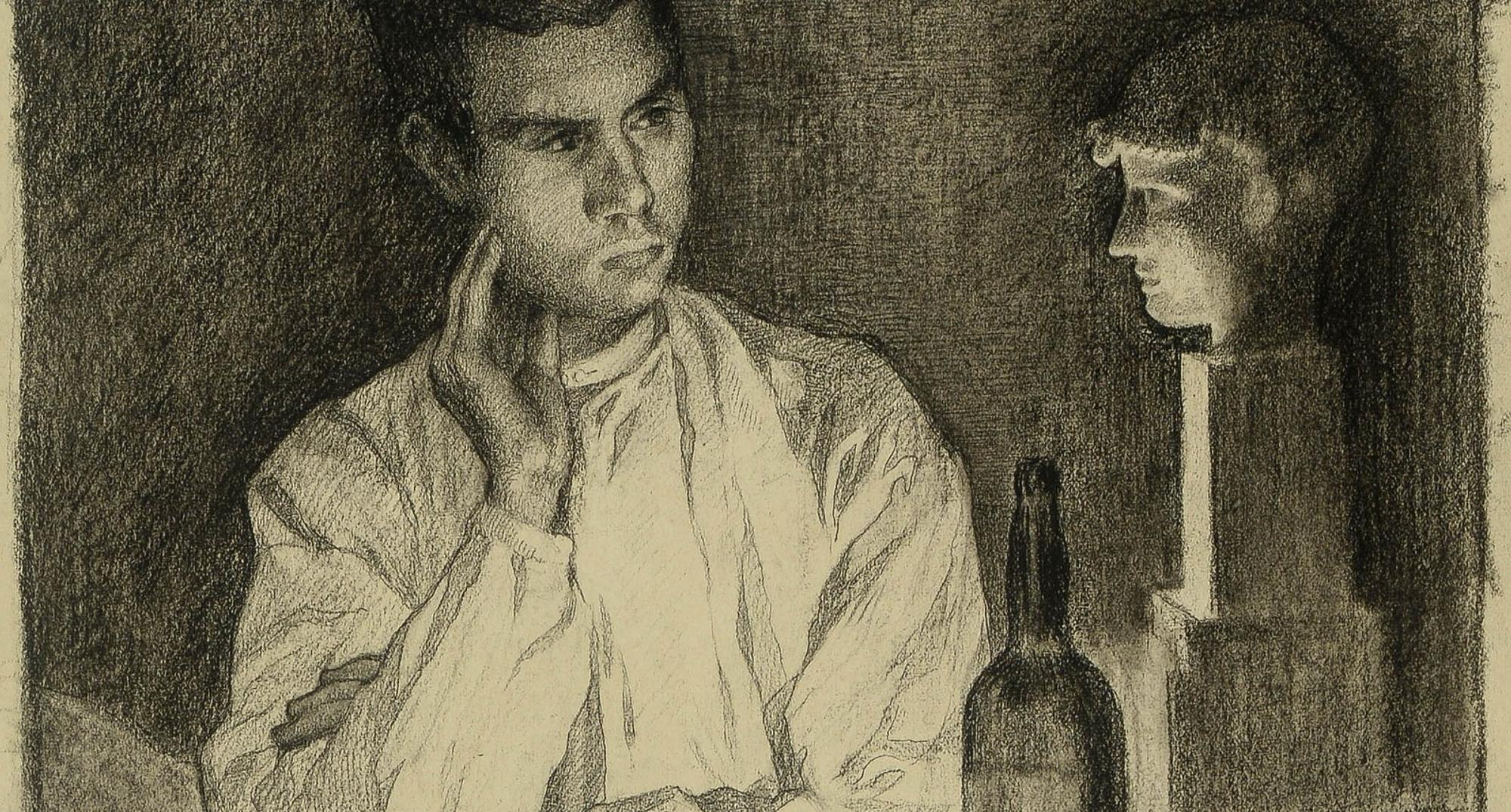
Large Johan Rohde collection donated to the museum
Thanks to a generous donation from the New Carlsberg Foundation, the museum has received a large collection of Johan Rohde’s (1856–1935) drawings, travelogues, sketchbooks and photographs – even his palette. Owned by Rohde’s descendants up until this point, these works and objects offer opportunities for following the artist’s work from sketch to finished painting. This makes the donation a very welcome addition to our already rich collection of Rohde’s works. Parts of the new acquisition will be on display for the first time in the Corner Display Johan Rohde. An Artist's Workshop from 29 May until 8 September 2019.
Johan Rohde is one of the most multi-talented artists ever seen in Denmark: with no hints of trepidation or hesitation, he would turn his hand to a very wide variety of tasks. Whether painting, fine-art prints, silverware for Georg Jensen or furniture design, the quality of his work was always top notch. In addition to this, he played a crucial role on the Danish art scene from the 1880s up until the dawn of the new century. For example, he was co-founder of two major artist-driven initiatives, Kunstnernes frie Studieskoler (an independent art school, literally the Artists’ Free Study Schools) in 1882 and Den frie Udstilling (literally The Free Exhibition, an artist’s association inspired by the French Salon des Refusés) in 1891. These initiatives offered alternatives to established academy tradition and to the juried exhibitions held at Charlottenborg in Copenhagen.
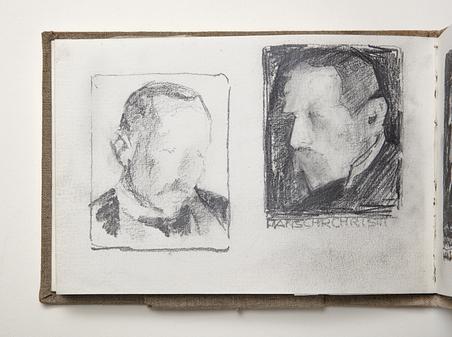
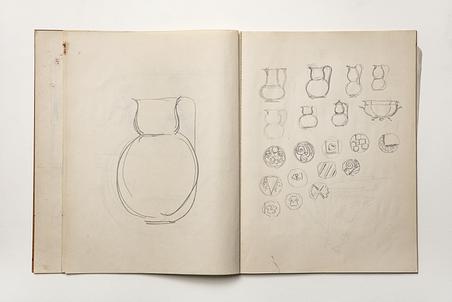
Sketchbooks – impulsive and structured
Johan Rohde’s masterpieces did not simply come into being with a snap of his fingers: the thirty-five sketchbooks now donated to the collection clearly show the care he put into his work. The sketchbooks testify to a patient outlook: on page after page, the artist would repeatedly draw the same fishing boat, the same duck, the same street. Through repetition, he gained greater understanding of the many facets of a given subject.
However, the sketchbooks also testify to another, more impulsive aspect of Rohde’s personality: the many drawings appear side by side with household accounts, timetables and to-do lists. Even a rapidly scrawled message to his wife Asa, conveying the address of a potential cleaning lady, found its way into one of the booklets.
Another characteristic trait of Rohde’s approach is that he did not use his sketch books chronologically, filling them in from cover to cover and picking up a new one only when the old was full. Quite the contrary: he would add a doodle here and another there, turning the paper around in all sorts directions as he worked.
You may find many pages left blank, followed by a carefully crafted scene from Venice, followed by yet more blank pages, possibly with a pressed flower in between, then a number of pages featuring numerous drafts for a ‘JR’ silver stamps and perhaps a large number of studies of peasant furniture towards the end. Thus, Rohde’s sketchbooks reveal a simultaneously impulsive and structured approach to art. But the end result, whether within the realm of painting or design, was always carefully thought out.
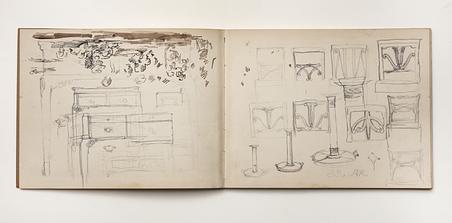
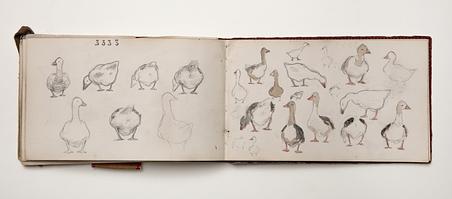
Large collection of photographs
All through his life, Rohde collected photographic depictions of the art, architecture and crafts of the past. The recent donation includes Rohde’s large collection of photos, containing approximately 1,600 photographic reproductions. The range of subjects is eclectic, including categories such as ‘Rembrandt’, ‘sofas’, ‘Spanish architecture’, ‘antique coins’, ‘Ravenna mosaics’ and ‘Christiansborg palace’. The collection features pieces from antiquity, the Renaissance and the Baroque eras, but Rohde’s own day is represented too, for example in the form of the French symbolist Gustave Moreau. Photographs were very expensive in Rohde’s day, and the sheer number of photos testifies to an artist who was keenly interested in what was happening not only within the arts, but in the wider world of culture too. After his death, the collection was organised and arranged in binders by his son, the writer H.P. Rohde.
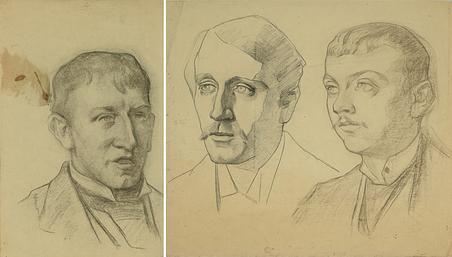

From sketch to finished work
The newly acquired drawings include a number of studies of the faces of fellow painters Ludvig Find, Gad Fr. Clement and Carl Frydensberg. Rohde used these sketches as references while working on Three Portraits from 1892, a painting acquired by the museum in 1970. While the finished painting may appear a little awkward and stiff, the drawn sketches are much more vivid and spontaneous. Comparing the two demonstrates that even though paintings are usually what makes an artist famous, Rohde was also a very accomplished draughtsman.
The point is borne out by number of drawings which Rohde created as designs for lithographs – including the drawing Man regarding a bust, which Rohde turned into a lithograph in 1894. The two works demonstrate how he fully understood the possibilities and limitations inherent in both drawings and prints as artistic media: though different, both works have an equal impact on the observer.

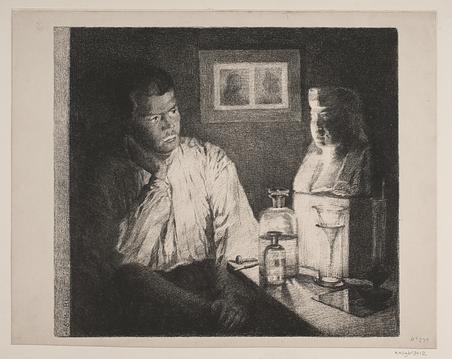
Corner Display about Rohde
The Hirschsprung Collection celebrates the acquisition of these new works by Rohde by presenting the Corner Display Johan Rohde. En kunstners værksted An artist’s workshop from 29 May – 8 September 2019. Here you will find everything from paintings and sketches to a palette used by the artist and a selection of photos from his extensive collection.
The display will also invite you to delve into the museum’s rich collection of letters exchanged between Rohde and the museum’s first director, the art historian Emil Hannover. Selected excerpts from this correspondence have been digitised as part of the New Carlsberg Foundation project ’Kilder til Dansk Kunsthistorie’, soon to be accessible from this website.
